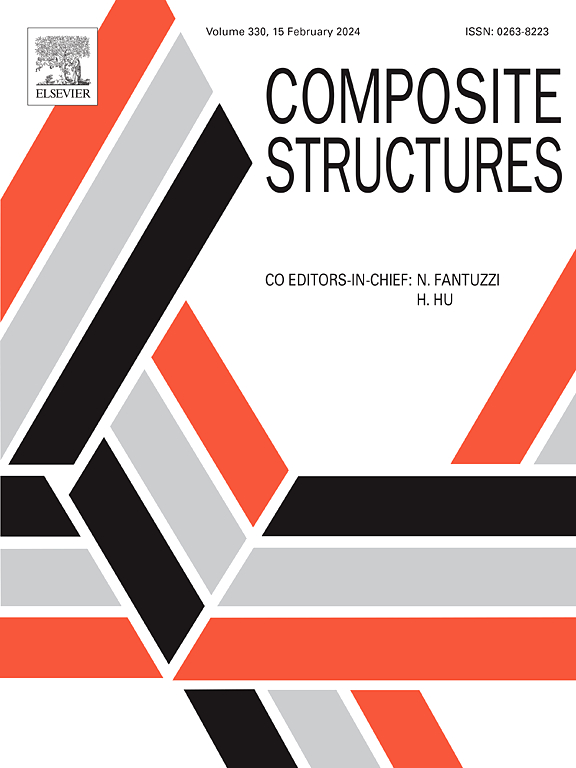混合复合金属结构对冲击后压缩的响应--实验和数值研究
IF 6.3
2区 材料科学
Q1 MATERIALS SCIENCE, COMPOSITES
引用次数: 0
摘要
对钛基纤维金属层压板进行 CAI 试验期间的冲击后损伤扩展过程进行了数值分析,并通过将其预测的机械参数与实验结果进行核对验证了该模型。在大多数研究案例中,冲击引起的分层被认为是其他模式传播的热点,并在达到峰值压缩力前不久集中传播。在 CAI 期间,远离撞击表面的金属-复合材料界面是分层传播最密集的位置,占钛-碳层压板总损伤面积的 63.5%,占钛-玻璃层压板总损伤面积的 81.6%。与分层类似,纤维和基体压缩造成的损坏也从撞击点开始扩展,即使在低体积情况下也会导致承载能力的显著下降。纤维和基体张力的传播与屈曲进展的关系比冲击后损伤更大,在复合材料层损伤模式中所占的体积比例也最高(钛-碳复合材料的最大比例为 13.5%,钛-玻璃复合材料的最大比例为 8.3%)。本文章由计算机程序翻译,如有差异,请以英文原文为准。
Hybrid composite-metal structure response to post-impact compression – Experimental and numerical study
Numerical analysis of the post-impact damage propagation process during CAI tests on titanium-based fibre metal laminates was conducted, and the model was validated by collation of mechanical parameters predicted by it with experimental results. Delaminations induced by the impact were claimed as the hotspot for other modes propagation in most of studied cases and intensively propagated shortly before reaching peak compressive force. Metal – composite interfaces away from impact surface were locations of most intensive delamination propagation during CAI, constituting 63.5 % of overall damage area for titanium-carbon laminate and 81.6 % for titanium-glass laminate. Similarly to delaminations, damage due to fibre and matrix compression propagated from impact point and lead to significant load-carrying ability loss even in low volumes. Propagation of fibre and matrix tension was connected more to buckling progression, than post-impact damage and had the highest volumetric share in composite layers damage modes (max 13.5 % for titanium-carbon laminate and 8.3 % for titanium-glass laminate).
求助全文
通过发布文献求助,成功后即可免费获取论文全文。
去求助
来源期刊

Composite Structures
工程技术-材料科学:复合
CiteScore
12.00
自引率
12.70%
发文量
1246
审稿时长
78 days
期刊介绍:
The past few decades have seen outstanding advances in the use of composite materials in structural applications. There can be little doubt that, within engineering circles, composites have revolutionised traditional design concepts and made possible an unparalleled range of new and exciting possibilities as viable materials for construction. Composite Structures, an International Journal, disseminates knowledge between users, manufacturers, designers and researchers involved in structures or structural components manufactured using composite materials.
The journal publishes papers which contribute to knowledge in the use of composite materials in engineering structures. Papers deal with design, research and development studies, experimental investigations, theoretical analysis and fabrication techniques relevant to the application of composites in load-bearing components for assemblies, ranging from individual components such as plates and shells to complete composite structures.
 求助内容:
求助内容: 应助结果提醒方式:
应助结果提醒方式:


